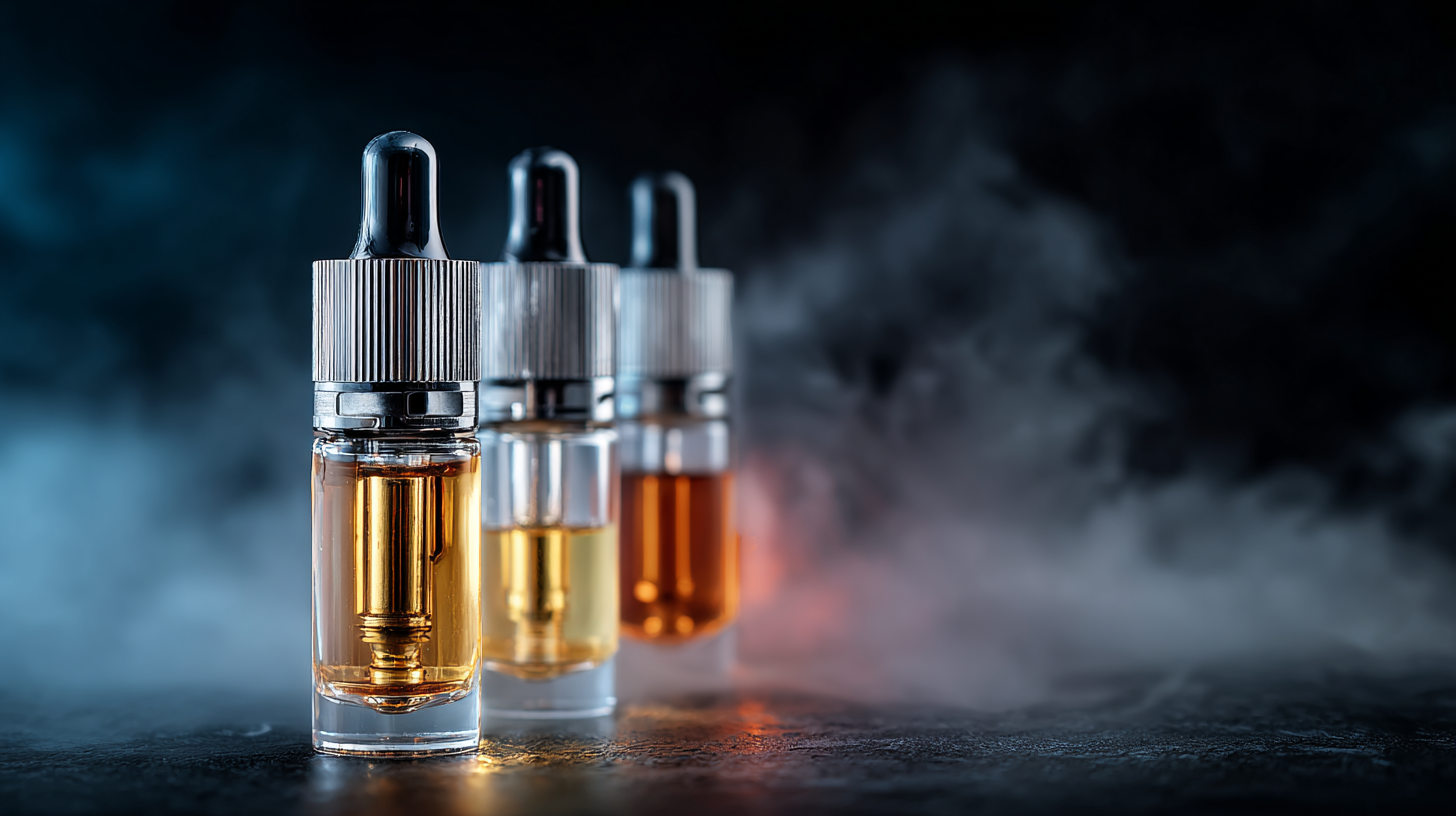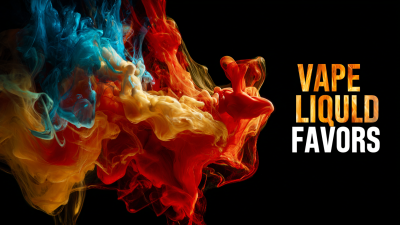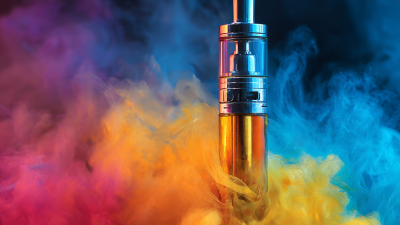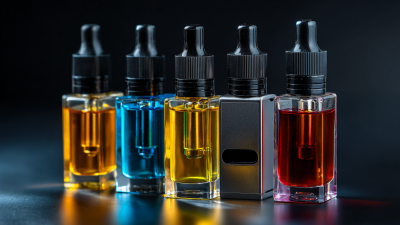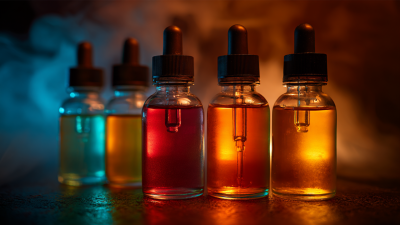

In 2023, the vaping industry continues to evolve, with Vape Flavoring Concentrates emerging as a significant category driving both industry growth and consumer engagement. According to a recent report by Grand View Research, the global vape market is projected to reach USD 66.43 billion by 2027, with flavoring concentrates playing a pivotal role in catering to diverse consumer preferences. Notably, a survey conducted by Statista revealed that approximately 60% of adult vapers in the U.S. prefer flavored vape products, highlighting the critical demand for innovative and diverse flavoring options. As the industry adapts to regulatory changes and consumer trends, understanding the dynamics surrounding Vape Flavoring Concentrates will be essential for stakeholders aiming to capitalize on this lucrative market shift. This article explores the latest trends in vape flavoring concentrates, delving into consumer insights and industry developments that shape this vibrant sector.

The vape flavoring concentrates market is projected to experience significant growth in 2023, driven by shifting consumer preferences and heightened awareness of vaping products. According to a recent report by Industry Research, the global vape flavoring concentrates market is expected to expand at a compound annual growth rate (CAGR) of 15% through the year. This growth can be attributed to the increasing popularity of customizable vaping experiences, as consumers seek unique flavor profiles that cater to their individual tastes.
As more users turn to vape products as alternatives to traditional smoking, flavoring concentrates are crucial. The latest data from Grand View Research shows that fruit flavors remain the most favored, accounting for nearly 40% of the total market share, followed closely by dessert and candy flavors. This trend indicates a clear consumer preference for sweet and fruity profiles, leading manufacturers to innovate and diversify their offerings.
**Tips:** When exploring vape flavoring concentrates, consider starting with small sample sizes to discover your preferred flavors without pressure. It's also wise to stay updated on local regulations surrounding vaping products, as these can vary significantly and impact availability or usage. Additionally, consider seeking products that undergo rigorous testing for quality and safety to ensure an enjoyable vaping experience.
In 2023, vape flavoring concentrates have gained significant traction among younger consumers, particularly Millennials and Gen Z. These demographics express a robust preference for diverse and innovative flavor profiles, driving industry trends toward more experiential vaping options. Fruity flavors like watermelon and berry blends remain perennial favorites, appealing to the youthful desire for sweetness and freshness. However, these consumers also seek more adventurous and unique flavors such as dessert-inspired options, herbal blends, and even exotic fruits, reflecting a growing trend towards personalization in their vaping experiences.
Moreover, social media influencers and online communities greatly shape the flavor preferences of younger users, as they often share reviews and recommendations for emerging flavors. This interaction fosters a dynamic environment where preferences can shift rapidly, with Millennials and Gen Z constantly on the lookout for the next trending flavor. Additionally, there is a notable demand for organic and naturally derived flavoring concentrates, indicative of a broader movement towards health-conscious choices among these generations. As the industry adapts to these evolving tastes, it continues to innovate, offering new flavors that resonate with the adventurous palate of today’s young consumers.
The landscape of the vaping industry in 2023 is significantly shaped by regulatory changes, particularly regarding vape flavor bans. According to a report by Market Research Future, the global vape market is expected to reach USD 45 billion by 2025, driven largely by the popularity of flavored concentrates. However, the implementation of flavor bans in various regions poses a substantial threat to this growth. Data from the Vapor Technology Association indicates that states that have enacted flavor bans have experienced a decline of over 20% in sales among affected retailers, creating a ripple effect throughout the supply chain.
Furthermore, consumer preferences lean heavily towards flavored products, with surveys revealing that approximately 70% of vape users primarily choose flavors over tobacco flavors. The American Vaping Association highlighted that when flavor options are limited, many users either reduce their consumption or revert to traditional cigarettes, undermining public health initiatives aimed at reducing smoking rates. As regulations evolve, the pressure on manufacturers to adapt to flavor restrictions while still satisfying consumer demand remains crucial, illustrating the intricate balance between public health priorities and market dynamics in the vaping industry.
| Flavor Type | Market Share (%) | Consumer Preference (%) | Impact of Regulation (%) | Sales Change Post-Ban (%) |
|---|---|---|---|---|
| Fruit Medley | 28 | 60 | 15 | -20 |
| Desserts | 22 | 50 | 25 | -30 |
| Menthol | 18 | 40 | 30 | -15 |
| Candy | 15 | 30 | 20 | -10 |
| Beverages | 17 | 20 | 35 | -25 |
| Herbal | 5 | 20 | 10 | -5 |
In 2023, the vaping industry has witnessed a significant evolution in flavoring techniques for vape concentrates. Manufacturers are increasingly experimenting with innovative blending methods, utilizing natural and synthetic flavor compounds to create unique taste profiles that cater to a diverse consumer base. The integration of novel ingredients, such as herbal botanicals and exotic fruits, has expanded the flavor landscape, enabling users to explore a spectrum of experiences that go beyond traditional options.
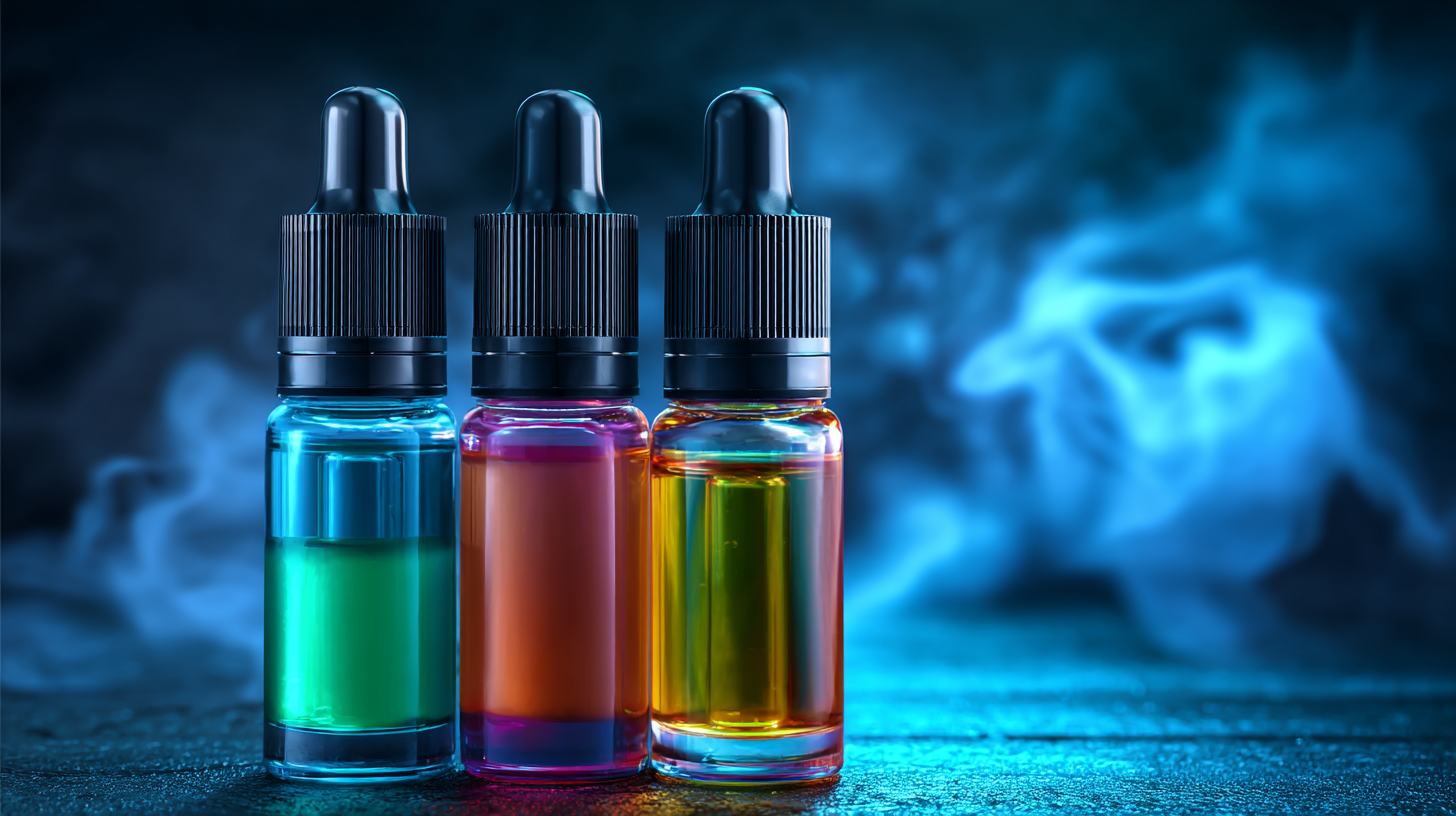
Moreover, advancements in technology have facilitated the development of advanced extraction methods, allowing for a more potent and vibrant representation of flavors. Techniques like supercritical CO2 extraction and cold pressing are being employed to enhance the purity and intensity of flavors while retaining the essence of the source material. This trend not only appeals to seasoned vapers seeking new sensations but also attracts newcomers who are looking for a compelling entry point into the vaping world. As consumers become more adventurous with their choices, the focus on innovative flavoring techniques is set to redefine the vaping experience in unprecedented ways.
As the vape market continues to evolve in 2023, consumers face a complex decision-making process that balances flavor appeal with health concerns. Vape flavoring concentrates have surged in popularity, offering a diverse array of tastes that attract a broad audience. However, rising health awareness and regulatory scrutiny have led many to reconsider their choices. The challenge lies in reconciling the desire for enjoyable flavors with potential health risks associated with vaping.
When choosing vape products, consumers should prioritize transparency from manufacturers. Look for brands that provide clear ingredient lists and lab results to ensure the safety of the flavoring concentrates. Additionally, opting for products that use natural flavorings can mitigate some health concerns compared to synthetic alternatives.
It's also beneficial to stay informed about ongoing research related to vaping and its health effects. Engaging with community forums and expert advice can guide informed choices, helping to create a balance between enjoying flavorful vaping experiences and making healthier lifestyle decisions. By navigating these factors wisely, consumers can enjoy the best of both worlds.
